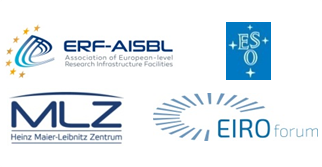Speaker
Mr
Terence O'CONNOR
(Science and Technology Facilities Council)
Description
The InterActions Collaboration was established in 2003 to coordinate international communications for the science of particle physics, and to foster peaceful collaboration across all borders. The InterActions membership comprises the world's major particle physics laboratories in Europe, North America and Asia, and reflects the global nature of funding and support for the discipline, as well as the differing cultural norms in scientific workplaces around the world. European members include the UK's STFC, CERN, DESY in Germany, NIKKEF of the Netherlands, Italy's INFN, IN2P3 and CEA of France, and Russia's JINR Dubna.
Since the Collaboration’s inception, InterActions' laboratories have continued to expand their operations beyond particle physics, and many now operate large scale research infrastructures for a broad range of science: from theoretical physics to material science, engineering, astrophysics, biological and life sciences, computational science, and associated data, theoretical, statistical and mathematical functions.
In practical terms, the Collaboration operates the Interactions.org website and Newswire, and provides a vehicle for the embargoed sharing of news and information between members, and a forum and protocols for planning the type of globally coordinated publicity needed for a truly global science. This talk will examine the practical aspects of the Collaboration’s activities, including the various protocols and funding arrangements, and will include an assessment of the transferability of these to other science communications forums.
Primary author
Mr
Terence O'CONNOR
(Science and Technology Facilities Council)

